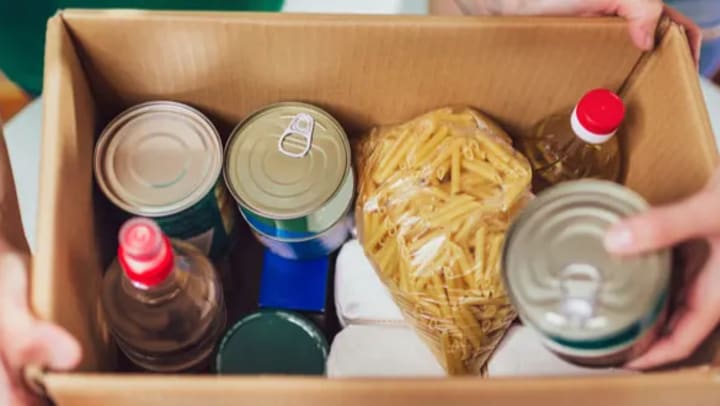Among the myriad challenges facing the military community, from long delays this PCS season to finding ways to make housing allotments stretch as far as possible, the last thing a military family expects to deal with is food insecurity.
The U.S. Department of Agriculture defines food insecurity as “a lack of consistent access to enough food for an active, healthy, life.” Research has shown that food insecurity is a complex problem, specifically because food insecurity refers to a lack of financial resources for food at the household level. That means that each household might have a different definition for “lack of financial resources,” making it difficult to pinpoint the line between food security and food insecurity. Making matters more challenging, military families who don’t have access to the same government-funded resources as civilians.
According to a recent Blue Star Families survey, an astonishing 29% of all junior enlisted personnel reported food insecurity-related concerns. Adding to the challenge is that nearly 70% of all enlisted Marines are 24 years or younger. As these Service members are navigating the earliest stages of their careers, they’re also doing so without much support. Few Service members want to admit they’re struggling to put food on the table, and even fewer Commands are willing to accept their junior enlisted members are experiencing these challenges. But the problem exists, and it’s becoming even more widespread. The Military Family Advisory Network reports that one in eight military families experience some level of food insecurity. In areas like San Diego and the greater Seattle-Tacoma area, where the cost of living is incredibly high, these numbers are likely even greater.
The leading cause of food insecurity for Service members and their families is low household income. Enlisted salaries are often better than civilians with the same education and experience, but these salaries have to stretch even further when Service members marry and have children. The most recent BSF survey noted that food insecurity is “intensified in families with a spouse who needs or wants to work but who is not employed.” Young families, in particular, might lack the skills and experiences necessary to best manage finances, making them even more at risk.
Civilians who are experiencing food insecurity can apply for the Supplemental Nutrition Assistance Program (SNAP). However, SNAP factors into the military’s housing allowance as income, so many young Service members don’t qualify for the benefits. Suppose a Service member chooses to live on installation. In that case, the income the United States Agricultural Department (USDA) uses to determine SNAP eligibility does not include the cost of on-base housing. But the USDA does include Basic Allowance for Housing (BAH) as part of its SNAP eligibility even though BAH Is not considered income. That means that two military families with the same base pay and family size could have different SNAP statuses because of where they live. USDA’s method to count BAH as income prevents otherwise eligible households from receiving food assistance, widening the already pervasive food gap.
Adding to this complex problem is that many military spouses lost their jobs during the pandemic, leading to even more significant income uncertainty for young military families.
The military rank structure suggests that many young families won’t need permanent, ongoing supplemental food support. As Service members rise in rank, their pay increases, and with that, less need for outside resources. However, needing immediate assistance and not being able to access it can have long-term consequences. Some Service members report not contributing to their Thrift Savings Plan to make ends meet. Some must rely on predatory payday loan services and end up in a cycle of debt.
Compounding matters even further, these Service members report feeling isolated and overwhelmed because they don’t know where to turn. The most recent MAZON report, “Hungry in the Military,” released this spring, shows that “at least part of the widespread problem … stems from a procedural barrier to assistance.”
Military Service Organizations (MSOs) like The Military Coalition and the Military Officers Association of America are leading the charge for a Basic Needs Allowance (BNA) allotment, which might help offset some of these difficulties. BNA would be issued to Service members at or near the poverty line and would be scalable based on income. Estimates show that the average recipient would receive about $400 a month, which might be enough to close the food insecurity gap.
Legislation has been introduced to amend Title 37 of the United States Code that would allow a BNA to be issued for low-income regular military members, giving some hope that the long-term blind spot relating to food insecurity in the military might finally be lifted. Some senators are directly appealing to Defense Secretary Llyod Austin, but so far, the legislation is still in review.
To learn more about overall food insecurity in your state, including congressional districts and county-level information, visit the Map the Meal Gap study, conducted by Feeding America.
If your family is facing food insecurity-related issues, we urge you to explore the following resources.
Feeding America network of food banks
Search for Food Pantries in your area along with information about subsidized grocery resources.
The Armed Services YMCA resource page lists food relief organizations by state.


